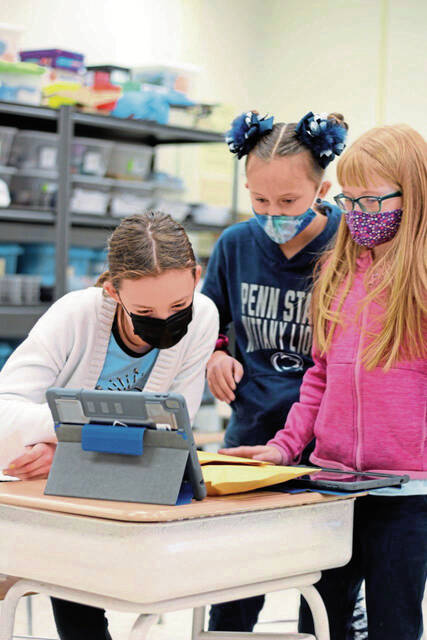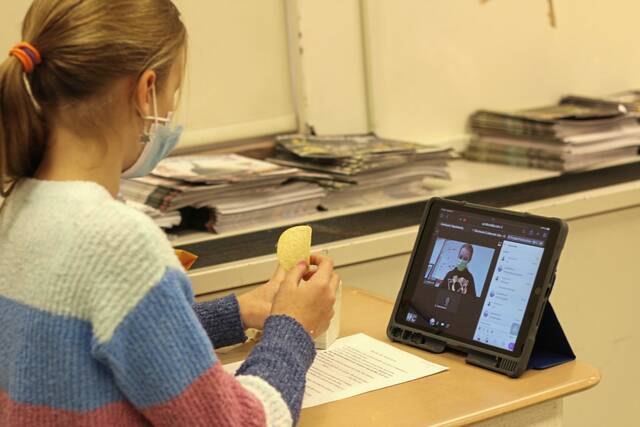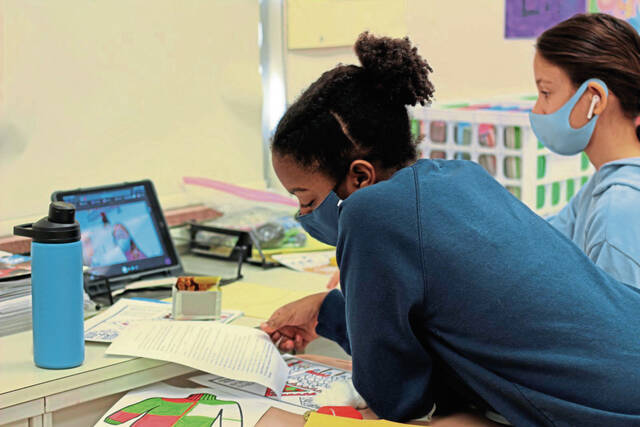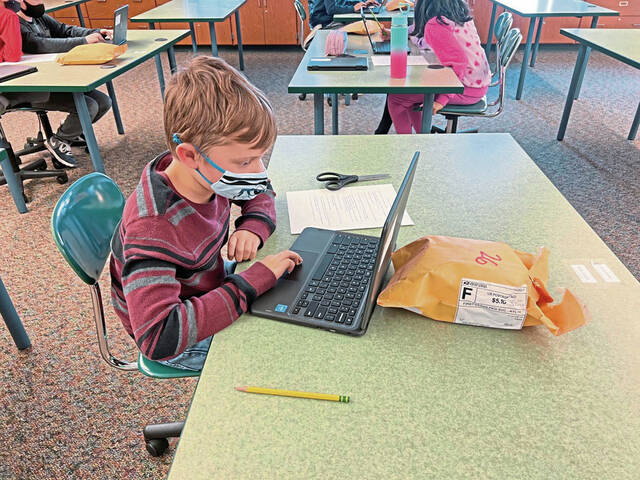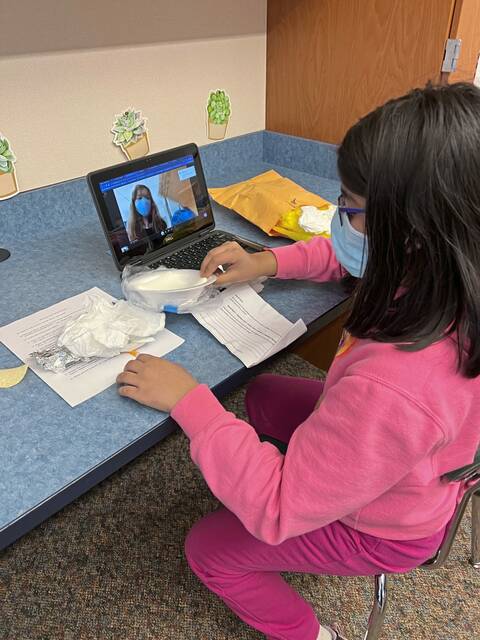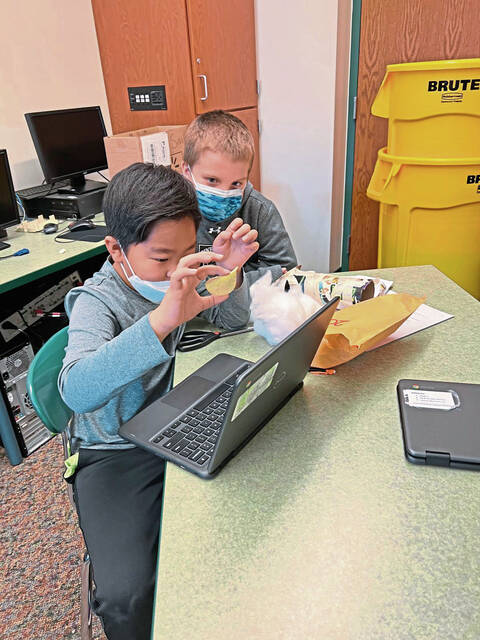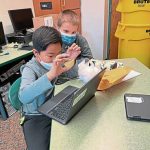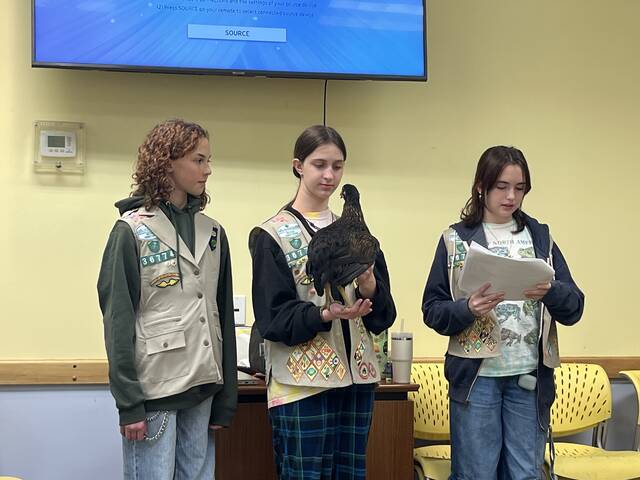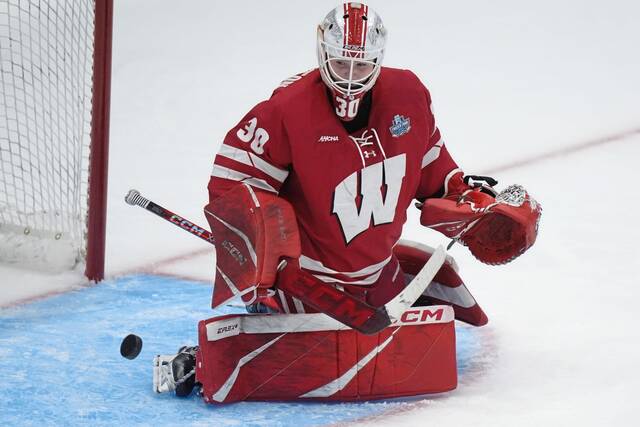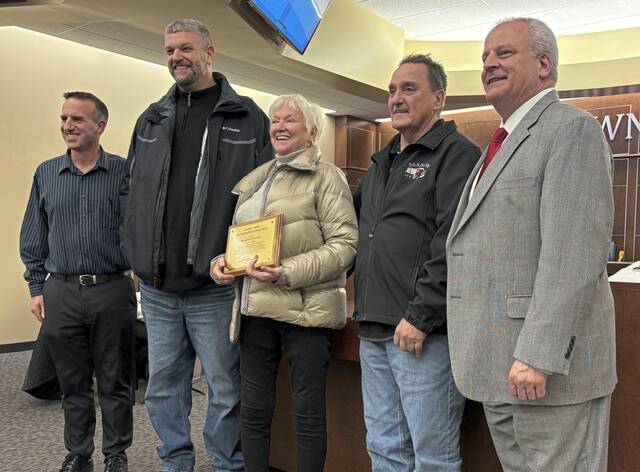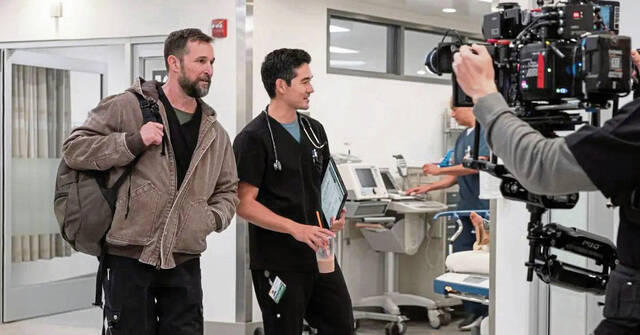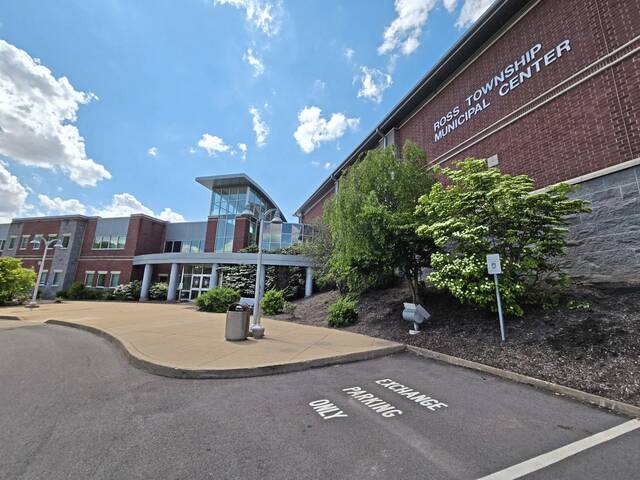Padded, packed and prepared for shipping, an army of potato chips went on a special mission to take a nonbreakable journey between two elementary schools in the North Allegheny and Pine-Richland school districts.
Fifth graders from Ingomar Elementary in North Allegheny and fourth graders from Eden Hall Upper Elementary in Pine-Richland took part in the Potato Chip Challenge, which tasked them to design and build a package that would send a single potato chip in the mail to students at the other school without it breaking.
The unique project had an academic purpose. Students researched ways to protect their chips, along with sketching, creating blueprints, drawing geometric nets; then building, revising and improving their concepts, said Jennifer Kopach, who, along with Joanna Sovek, teaches gifted support at Pine-Richland for fourth, fifth and sixth grades.
“We want our students to apply the Engineering Design Process, be aware of non-synthetic materials and have an outlet to apply high-level thinking in a real-world setting while showing resilience in putting into action difficult math concepts,” Kopach said.
Ingomar student Emily Karl successfully shipped her chip using Styrofoam and cotton balls to cushion it, so it arrived in one piece. Karl, 11, of Franklin Park, said her favorite part of the challenge was “waiting to see if the Pringle was cracked or not.”
Students had to design packages with the smallest mass and volume while protecting the chip and mail it to another student at the other school, said Amy Scott, a gifted-education and fifth grade teacher at Ingomar.
Scott spearheaded the project and reached out to Sovek and Kopach right from the start to have a partner school.
“It has been the three of us since its start in 2015,” Scott said.
Scott said she knew she wanted students to make a package of some kind, but she didn’t know for what.
“As I was brainstorming different food items, potato chips came to mind. What better chip than a Pringle? I liked it because of its unique shape,” she said.
The most recent challenge was between Scott’s fifth grade and Kopach and Sovek’s fourth graders. Planning began in October, Scott said.
Students at each school had the same goal: delivery of an intact potato chip, but the students had to come up with the packaging on their own.
“A lot of the kids knew they had to think outside of the box,” said Scott, who encouraged them to take risks. “I’d ask them, ‘What’s the worst that will happen but that it might not work?’ ” she said.
Some students worked in pairs and others individually. They all had to determine how to best pack one chip using a variety of sustainable materials, ruling out glass, metal, hard plastic, packing peanuts, clear tape and bubble wrap. An outer package was to be constructed of single-ply cardboard, such as a tissue or cereal box. It was then sealed in a 9-by-13-inch envelope and sent to the other school through regular, first-class mail.
The chip could not be altered in any way and be edible when received, though students were not supposed to eat it. Most students used cotton balls, yarns or even pipe cleaners to cushion the inside of their package, Scott said.
Three North Allegheny homerooms totaling 66 students participated in the challenge, said Scott. They engineered and made the package with a partner to send to Pine-Richland classrooms. Scott said students had to take risks, problem solveand learn to cooperate with another person.
They got classroom time for trial and error before sending their packages, the mailing done by teachers.
Forty Eden Hall gifted students were involved in the challenge, Sovek said. They had a test phase, said Kopach and Sovek, where a student could build a prototype to mail to his or her own home, assess the results, make modifications and then do the final build and mailing.
After the chips arrived at each school, the groups met in real time by video Dec. 21. Each small group or individual student opened the package received and saw the results. Before opening, students were to follow a script to ask some basic questions about the other student, such as their favorite subject, or things to do. Then they did the reveal.
“I had never experienced anything like it before. It was hard designing it and creating the nets, but I enjoyed it,” said Eden Hall fourth grader Nathan Leckey, 10, of Mars.
Leckey referred to geometric nets that serve as an outline to bring a two-dimensional shape to life in 3D, said Sovek.
This exposure allows students to explore area, volume and different geometrical shapes, and it eventually assists them with understanding surface area, according to Sovek.
“Think of taking apart a cereal box but keeping it in one piece so you could see what shape it was before it was folded together. Everyone might take it apart differently. This allowed us to take what students would be required to do in a traditional classroom setting into the real world to make a shipping box that they could measure, fold, and fill, while using abstract higher-level thinking, problem-solving, and visualization,” said Sovek.
This added to the critical thinking, collaboration, problem-solving and communication necessary to the project’s success, the teachers said.
“Giving our students the opportunity to work in a problem-based learning platform is what we strive for in our gifted support program. The ability to collaborate with another district was a great addition to our students’ learning environment as it supports our mission of developing 21st-century skills,” Kopach said.
Perfectly intact chips scored 100 points. Those with damage got fewer points. “Pringle dust,” a chip in more than 20 pieces, was worth only one point, according to the scoring sheet.
While Ingomar’s Luciana Becker, 11, of Franklin Park liked “making the package and opening the other person’s to see how they made it,” fellow student Ben Lauer, 11, was focused on chip survival.
“I was wondering if it made it or not,” he said.
His chip made the journey successfully using cotton balls, but he said he would use less padding if he was to do it again. But the Franklin Park resident had an idea for another district collaboration.
“One future project could be an egg drop where students from IES and Eden Hall plan and design a package together but they make it individually,” Lauer said.


